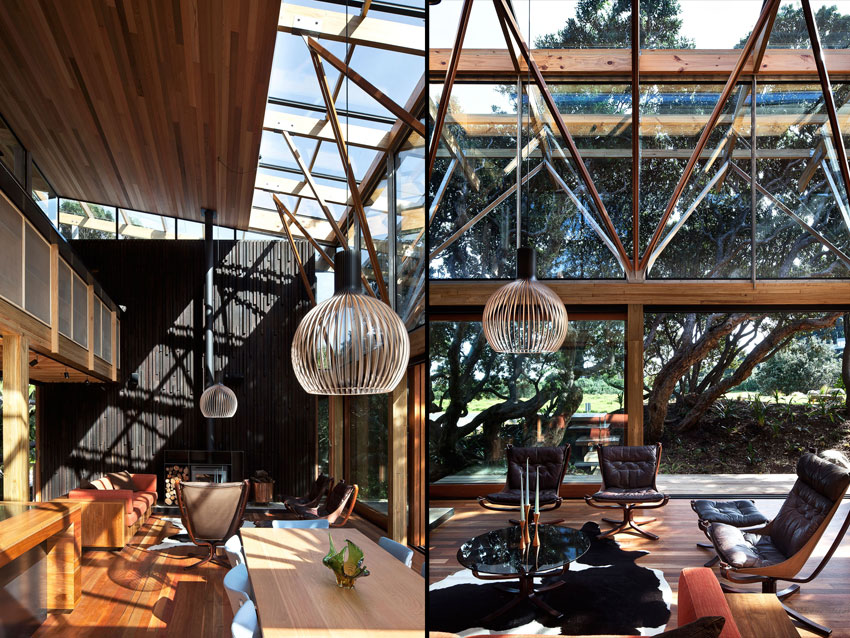The Under Pohutukawa house designed by Herbst Architects in New Zealand presented a site 90% covered in mature Pohutukawa trees. In response, private and public areas are separated into smaller individual masses to articulate the forms.
Under Pohutukawa House Technical Information
- Architects: Herbst Architects
- Type: Residential / House
- Location: New Zealand
- Contractor: John Armstrong
- Materials: Wood, Glass
- Photographs: © Patrick Reynolds
The circumstances not so much allowed, but dictated a sensitive poetic response to a building that, in order to exist would require the destruction of a large number of mature trees. To do this we looked to the trees themselves to give us the cues that we needed.
– Herbst Architects
Under Pohutukawa House Photographs
Article by Herbst Architects
The Pohutukawa is New Zealand’s national tree; it is known as the NZ Christmas tree as its flowers are bright red in summer. Pohutukawas are protected under local authority regulations.
The site with which we were presented was extremely challenging in that it was 90% covered in mature pohutukawa trees; the site is a part of a continuous belt of forest that edges the road along the beachfront.
The circumstances not so much allowed but dictated a sensitive poetic response to a building that, to exist would require the destruction of a large number of mature trees.
To do this, we looked to the trees themselves to give us the cues that we needed.
We separated the brief loosely into private and “public” components, giving us smaller individual masses with which to articulate the forms. The private functions of bedrooms and garage are housed in two towers which are construed as freshly sawn stumps of the trees that were removed.
To allude to the bark of the stumps, the skins of the towers are clad in black/brown stained rough sawn irregular battens. The interior spaces are then seen as carved out of the freshly cut wood, achieved by detailing all the wall/ceiling and cabinetry elements in the same light timber veneer panels.
The public space connects the two towers and attempts to engage with the surrounding pohutukawa forest by defining a crossover space between the powerful natural environment and the built form. The plane of the roof form pins off the towers to engage with the continuous tree canopy, disintegrating from a rigid plane to a frayed edge that filters light similarly to the leaf canopy. The primary structure holding up the roof is a series of three elements that allude to the trunks and branches of trees but are detailed in a rigorous geometric arrangement which suggests an ordering of nature as it enters and forms the building.
The height of the public space with its light glass division responds to the height of the surrounding trees; the roof plane is partially glass to allow the full extent of the trees to be felt as they lean over the building.
A walkway links the towers at the upper level, allowing engagement with both the natural and man-made canopies.
Under Pohutukawa House Plans
Under Pohutukawa House Gallery
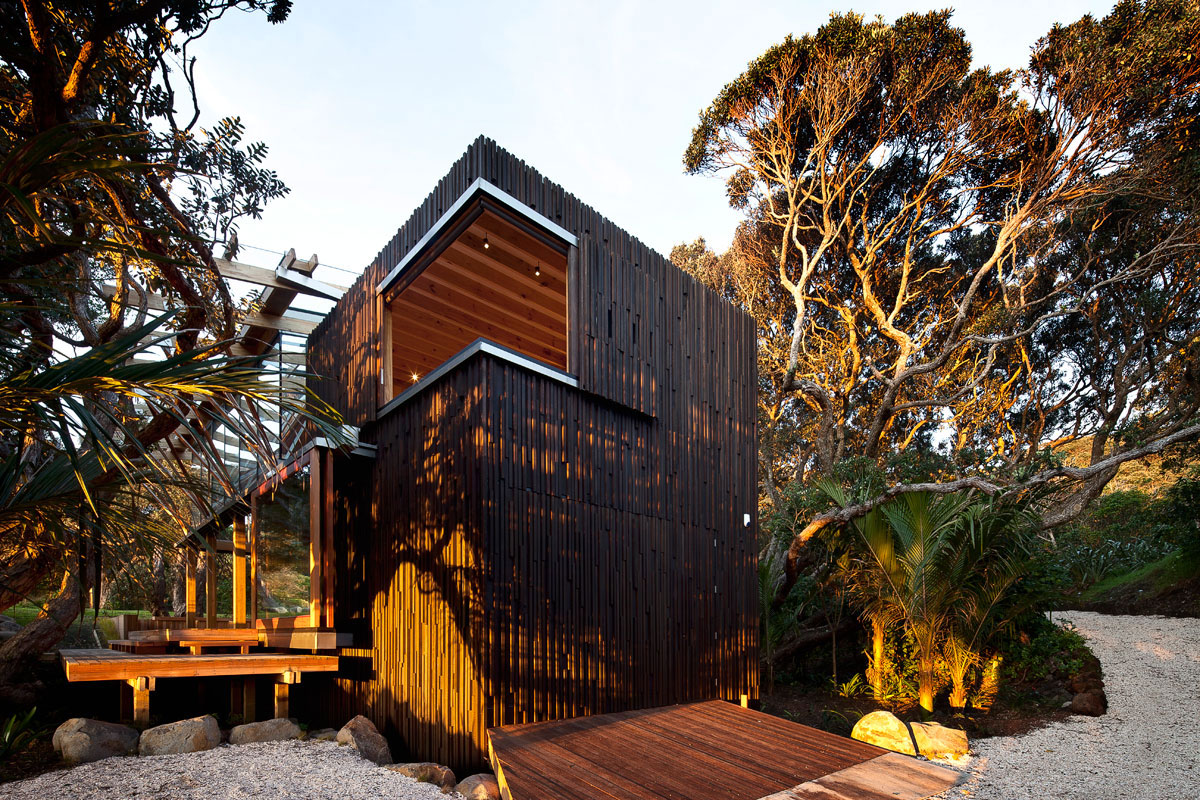

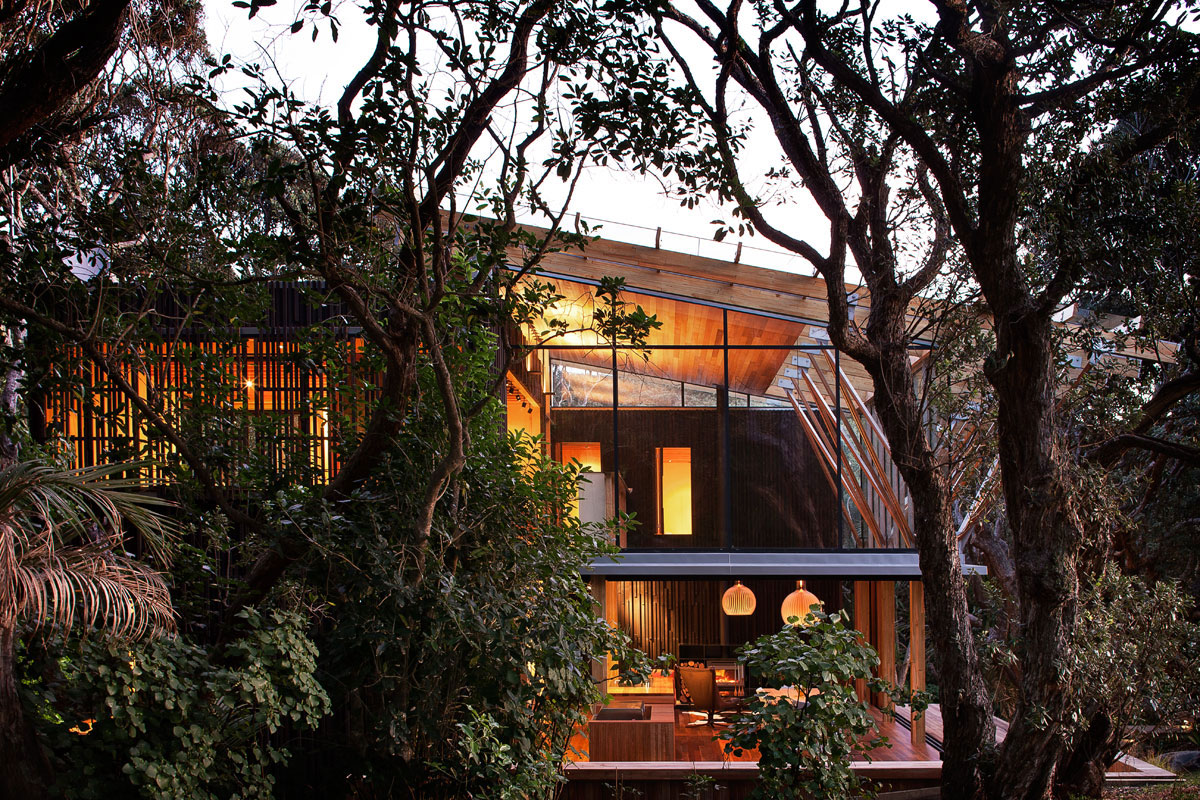
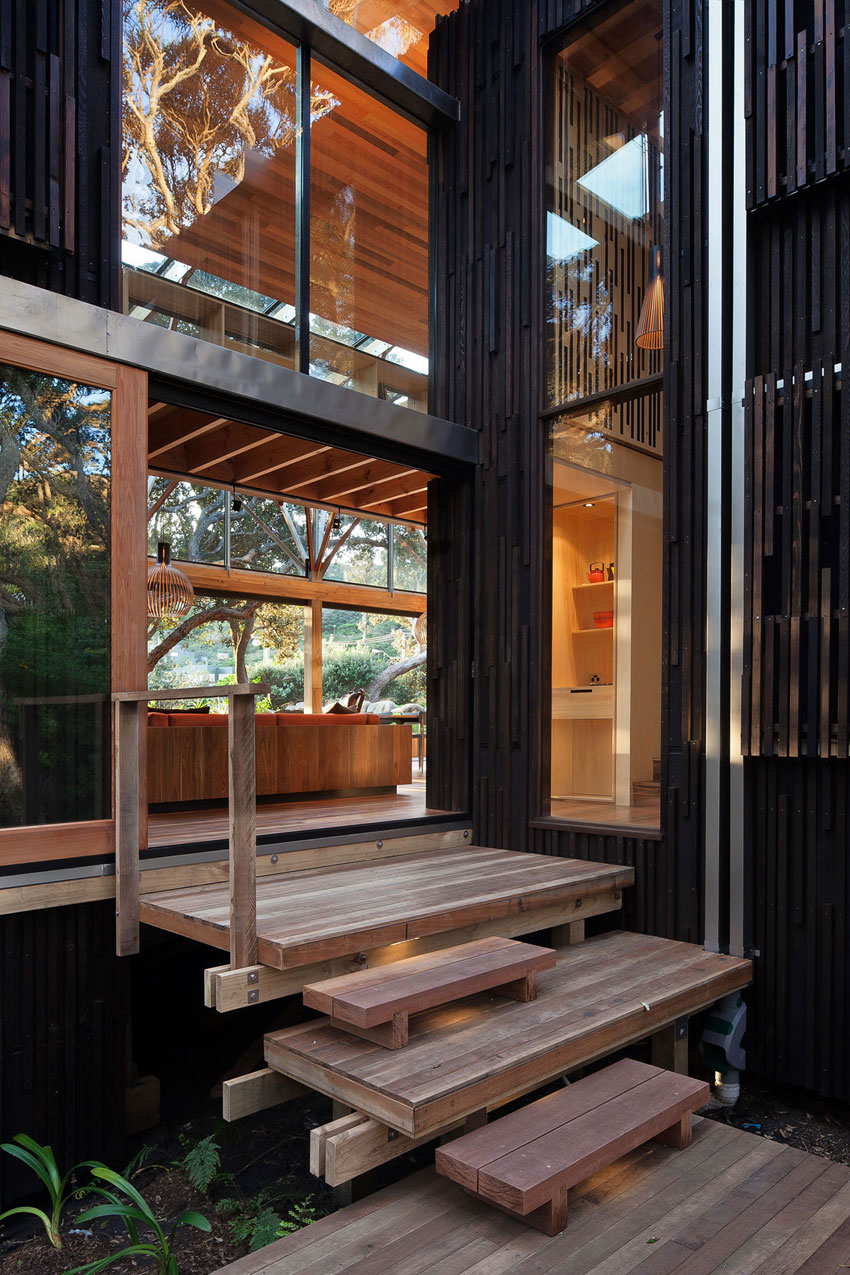
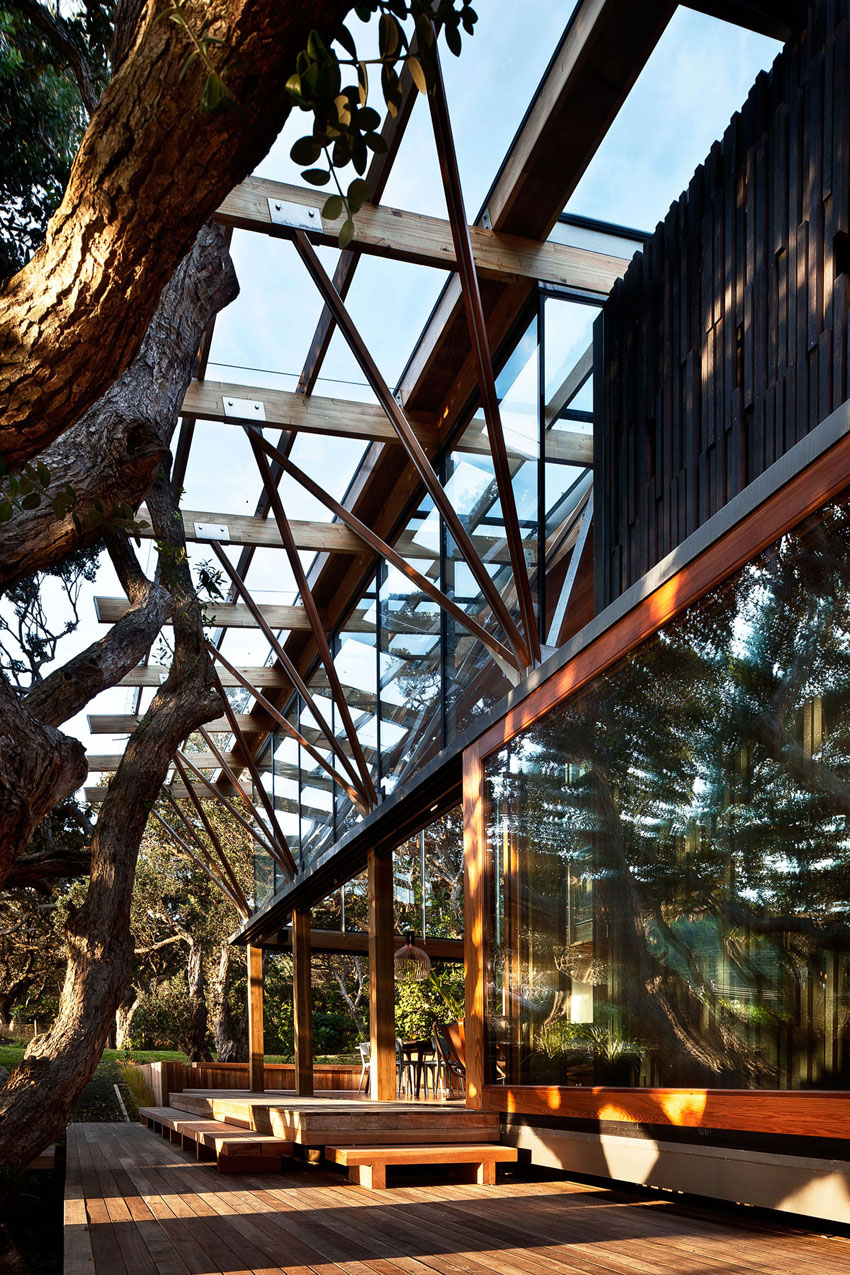

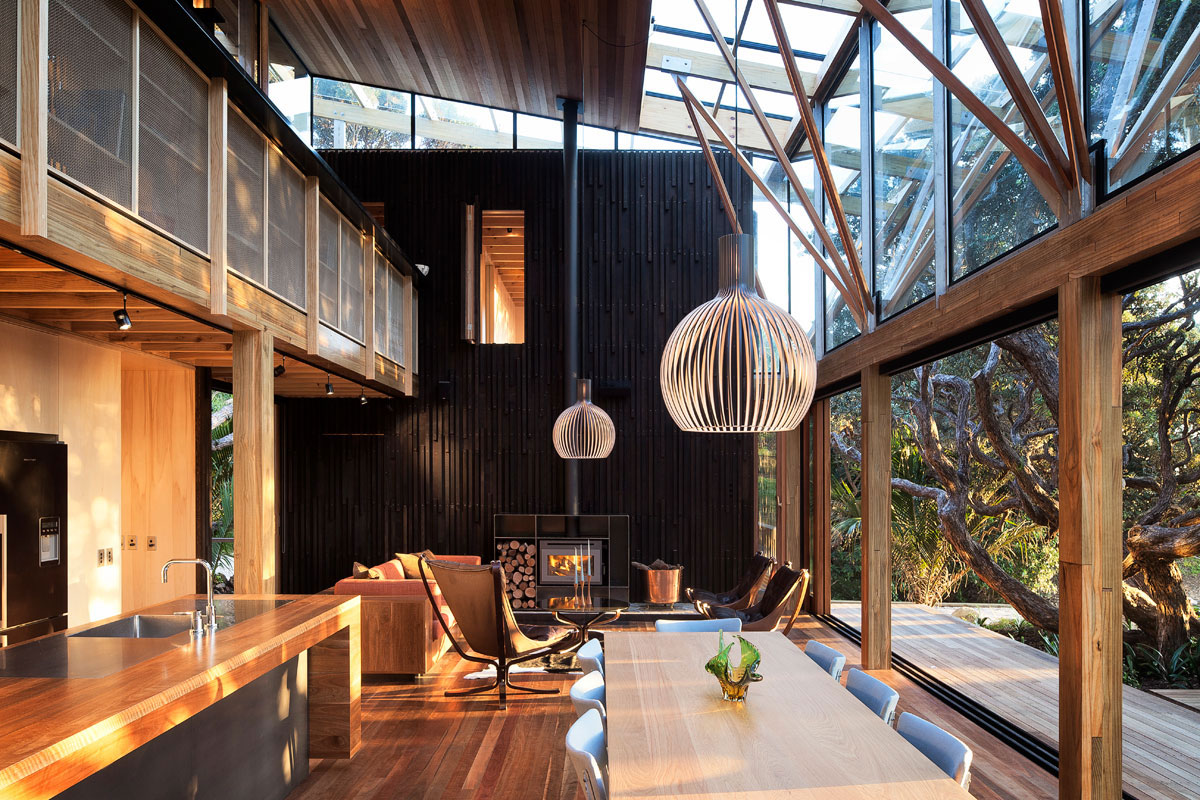

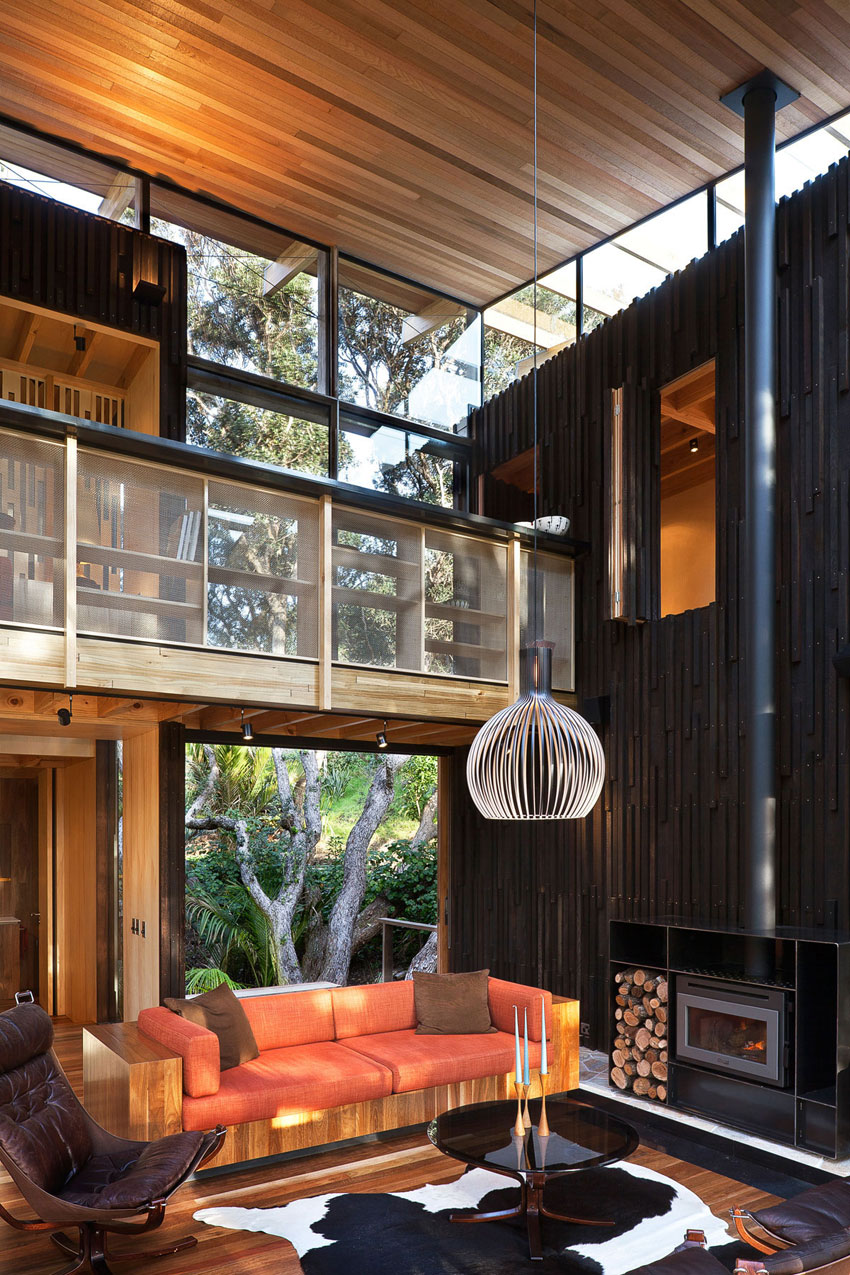
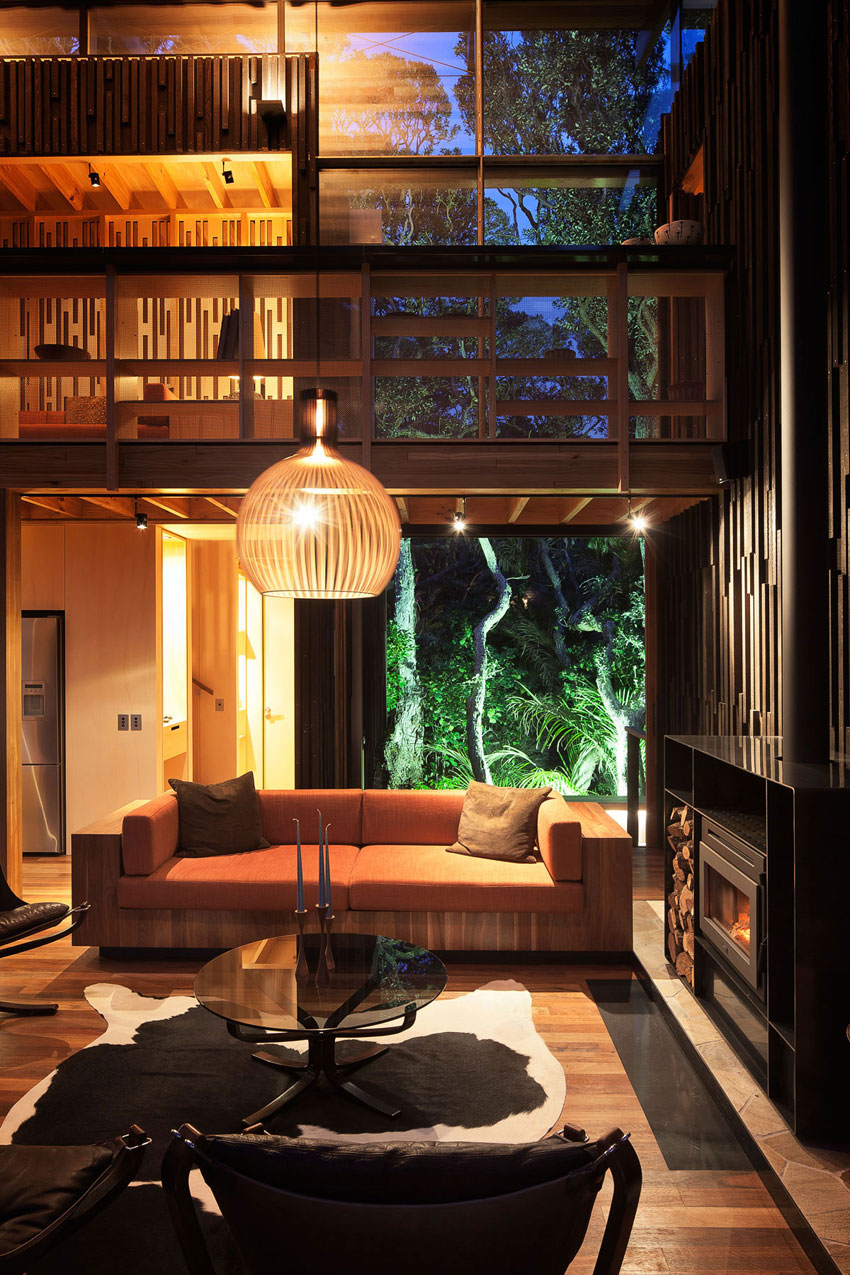
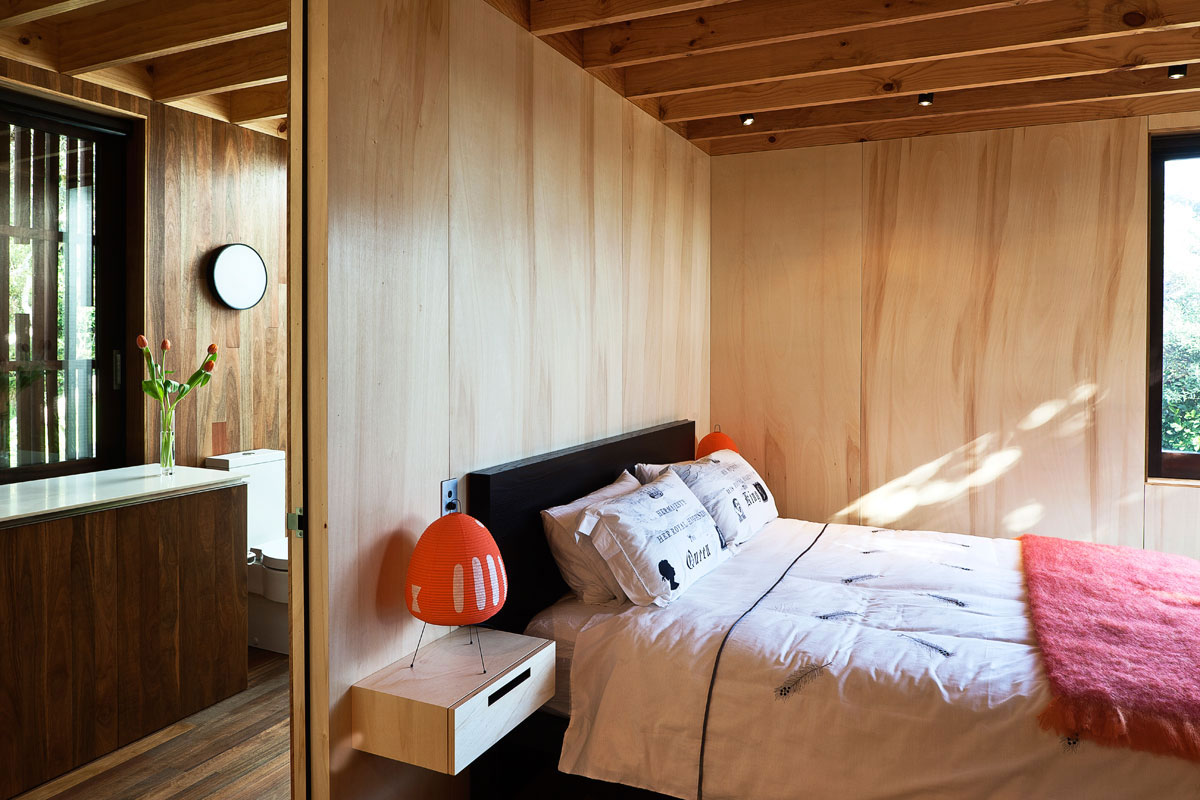
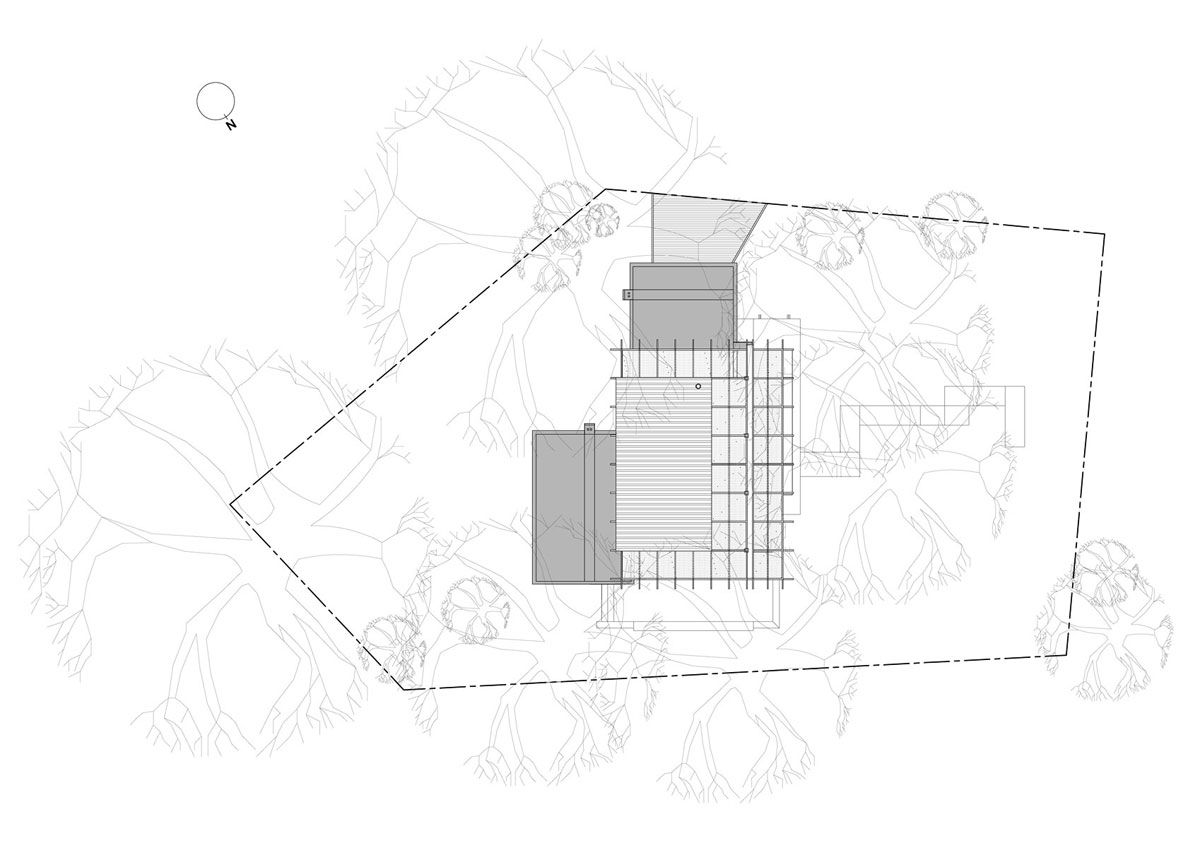
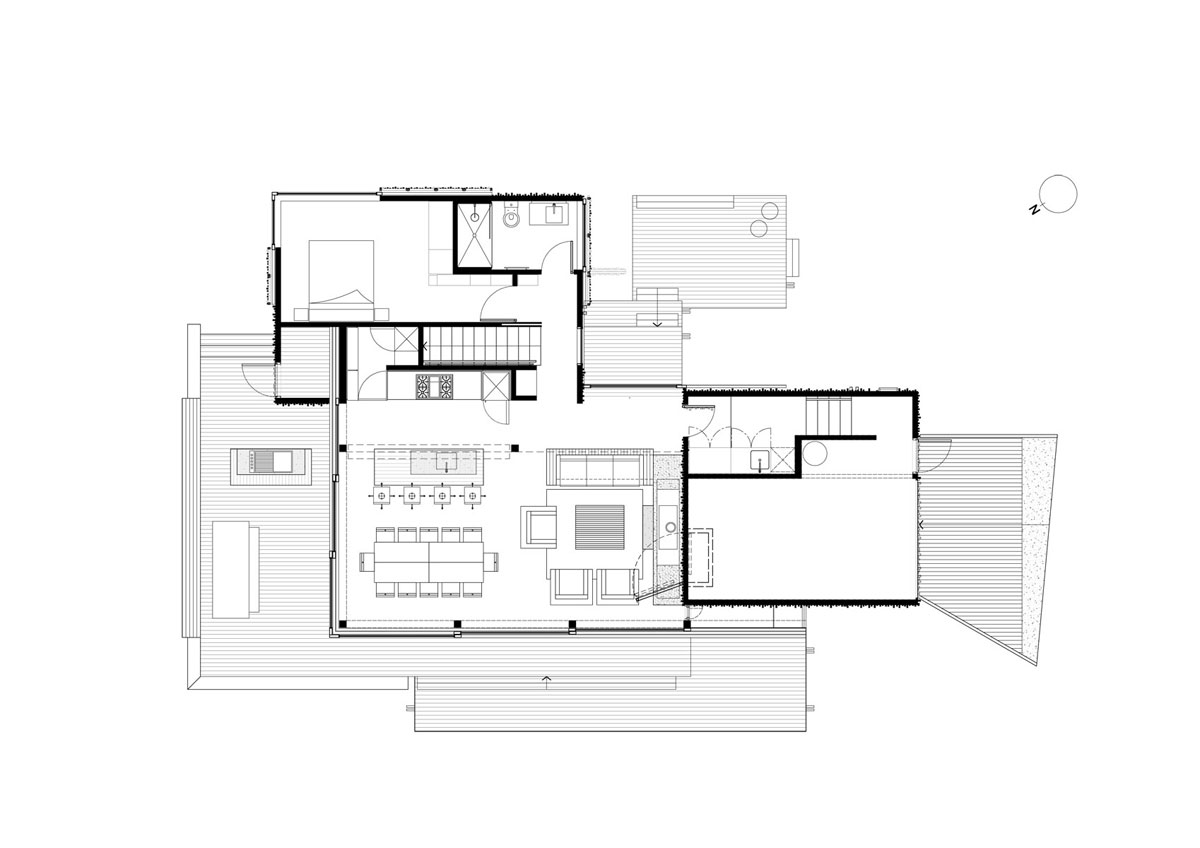
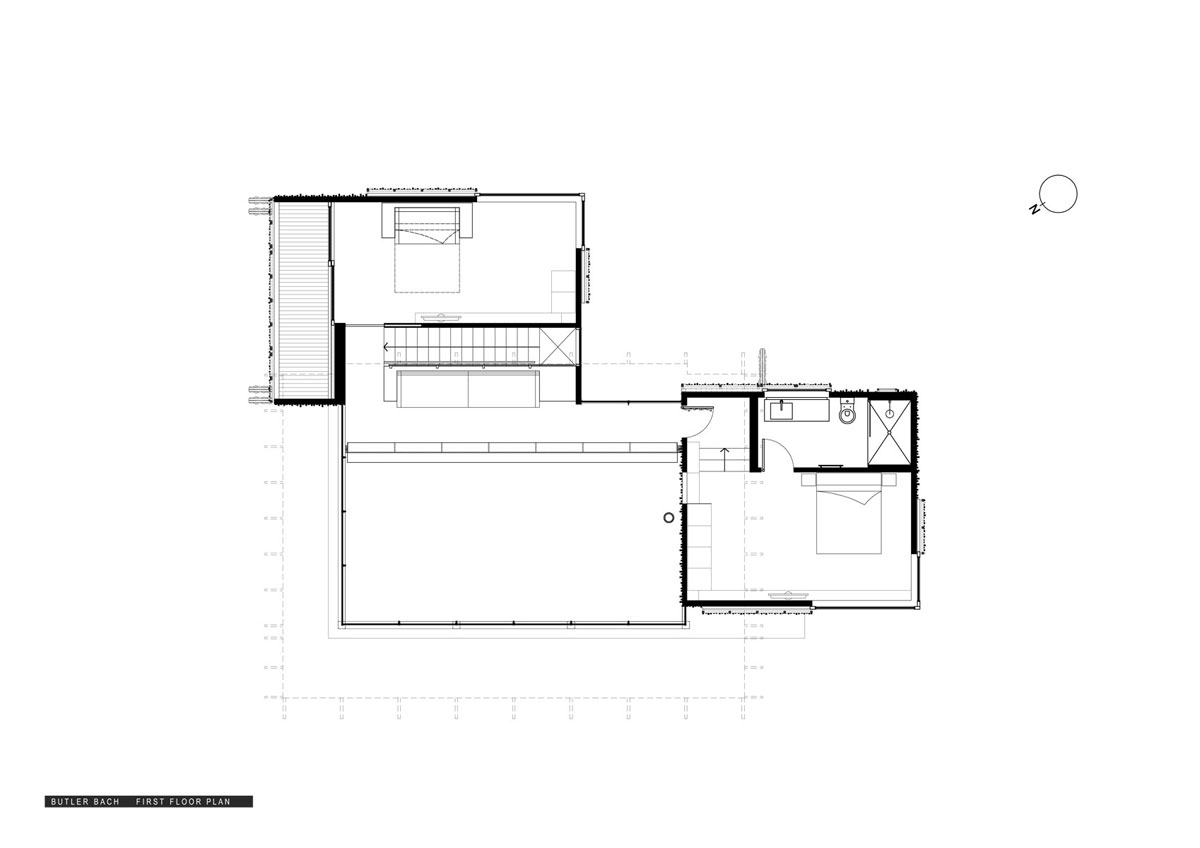

About Herbst Architects
Lance & Nicola Herbst met while studying architecture at the University of Cape Town. After graduating, they worked partly together and partly independently on projects in South Africa and immigrated to New Zealand in 1998, and established Herbst Architects in 2000.
One of the couple’s first projects was their own bach on Great Barrier Island, for which they received the New Zealand Institute of Architects Award in 2002. The Island is now home to eight of their houses – all off the grid – each designed to have minimal impact on the environment.
For most of the past 15 years, Nicola and Lance have been asking themselves: what’s the best way to live in and feel connected to the New Zealand landscape and climate?
[cite]

